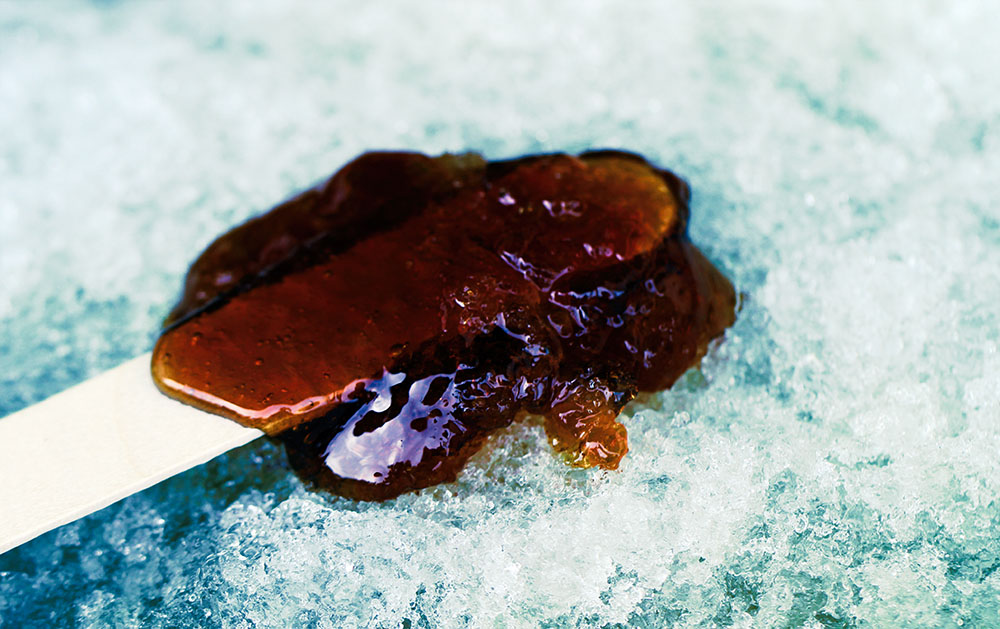Too soon? Is it too soon to be invited to a cocktail party just five days into my New Year’s resolution? It’s the first week of January, and most of us probably spent the week banishing bacon from our diet and digging out our running shoes from the pile of empty wine bottles in the recycling bin (what happened to the left shoe?). Ah yes, the New Year. The time to put diet and fitness goals into focus. Salads and going to bed early may get me that flat stomach, but why bother if can’t even show it off? What’s a girl to do if she wants to balance a healthy lifestyle with an exciting social life?
I suppose I have a few options: a) stick to my guns and decline the invite (tell my friends that I have to bathe the cat … I don’t even own a cat, or that I have to find that missing left shoe); b) accept the invite (with a side order of guilt) and commit to sipping on only vodka sodas all night; c) accept the invite. Chuck the “annual contract with myself” out the window and enjoy the free-flowing libations! There’s always next year. Or perhaps I’ll choose the most sensible option: d) accept the invite with no guilt. Drink less, but drink better. I will be smart and rethink my liquor choices and promise myself to steer clear of sugary alcoholic drinks to avoid Hangover-ville.
We’ve all been there before; a Margarita here, a few Negronis there, and a pounding headache the next morning because your sugar and calorie levels are through the roof — and you haven’t even had your Fruit Loops yet! From the white sugar in a Mojito, to the brown sugar in a hot buttered rum, to sugar cubes soaked in bitters in a Champagne cocktail, the sweet stuff is the most-used ingredient in many mixed drinks (and we haven’t even included the mixers yet).
While there are many uses and varieties of sugar, chemically speaking, each is a manifestation of the same beast: sucrose. Sucrose encompasses both fructose and glucose. Cocktails containing mixers and sweeteners (fruit juice, soda, agave syrup and honey) that are high in fructose are concerning. Unlike glucose, which can be used up by virtually every cell in the body, fructose can only be metabolized by the liver. Fructose is broken down in the same way as ethanol alcohol and, therefore, places double stress on the liver when consuming high-fructose drinks. This can lead to a host of nasty things including heart disease, obesity, diabetes, liver failure, tooth decay, and a host of other problems. Fructose is like alcohol without the buzz. Simply put, that Old Fashioned you are sipping on (albeit delicious) is making your liver work overtime.
There are reasons why we like sugar so much. We have been in love with this stuff from the time we lived in caves (no, not those caves). Evolutionarily speaking, foods that are sweet tend to be comforting and safe. This would explain why when I was (barely) of legal age, the Fuzzy Navel and Sex on the Beach were all the rage. Who wouldn’t want to quaff back a few of these sexual innuendo cocktails that sounded so fun and whimsical? Newbie drinkers (myself included) didn’t want to taste the alcohol in their cocktails. Instead, they wanted to drown in a thickness of sugary liqueurs and sickly sweet juices. These ‘90s cocktails had one common flavour profile: cloying sweetness (thankfully, my taste buds have matured!).
Fast forward to today’s world of cocktails, where everything old is new and trendy again.
From vintage glassware, to fun confectionary flavours (bubble gum cocktail anyone?), to the comeback of bitters, and even the role of the bartender.
Once upon a time, there was a mustache-less bartender, and nobody noticed him, he just got everyone beers and he didn’t know a damn thing about Chartreuse (tsk tsk!). The renaissance of the classic cocktail has led to a whole new generation of bartenders — often called bar chefs and mixologists — making their own sodas, bitters and infusions.


